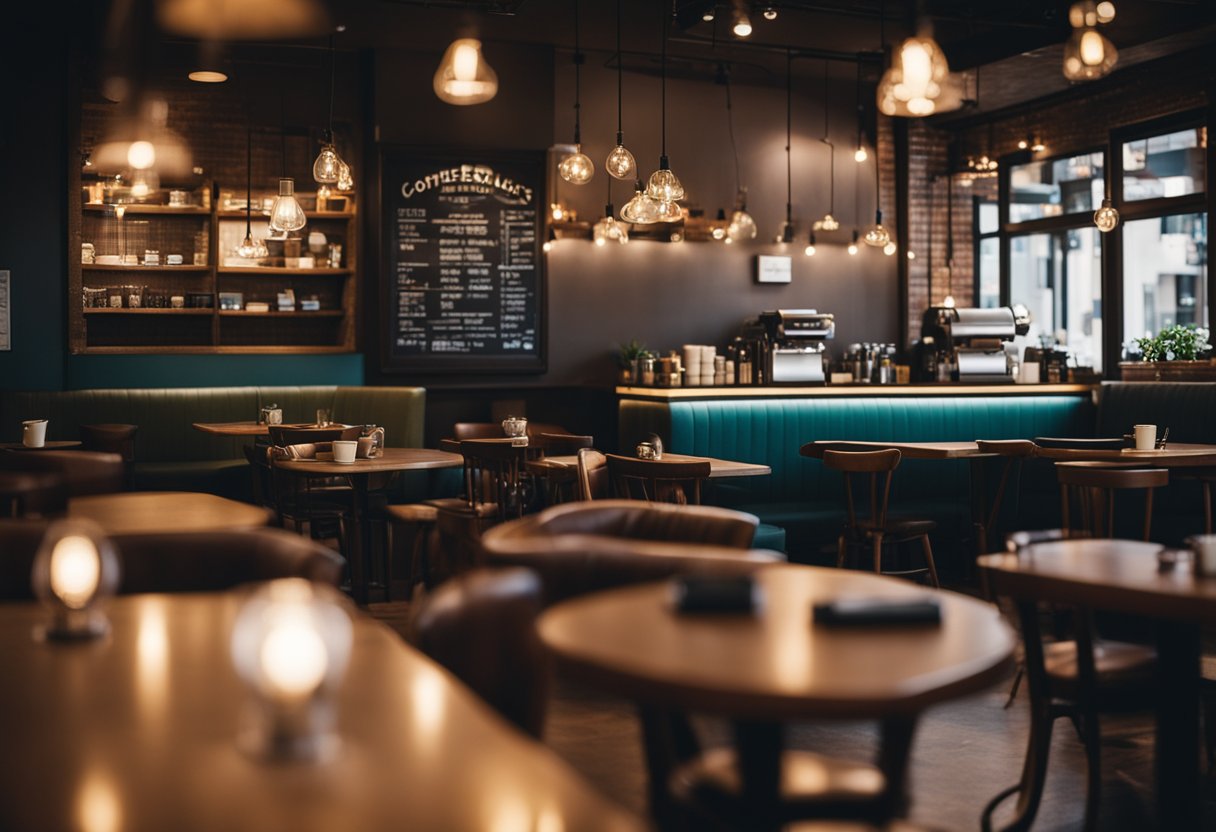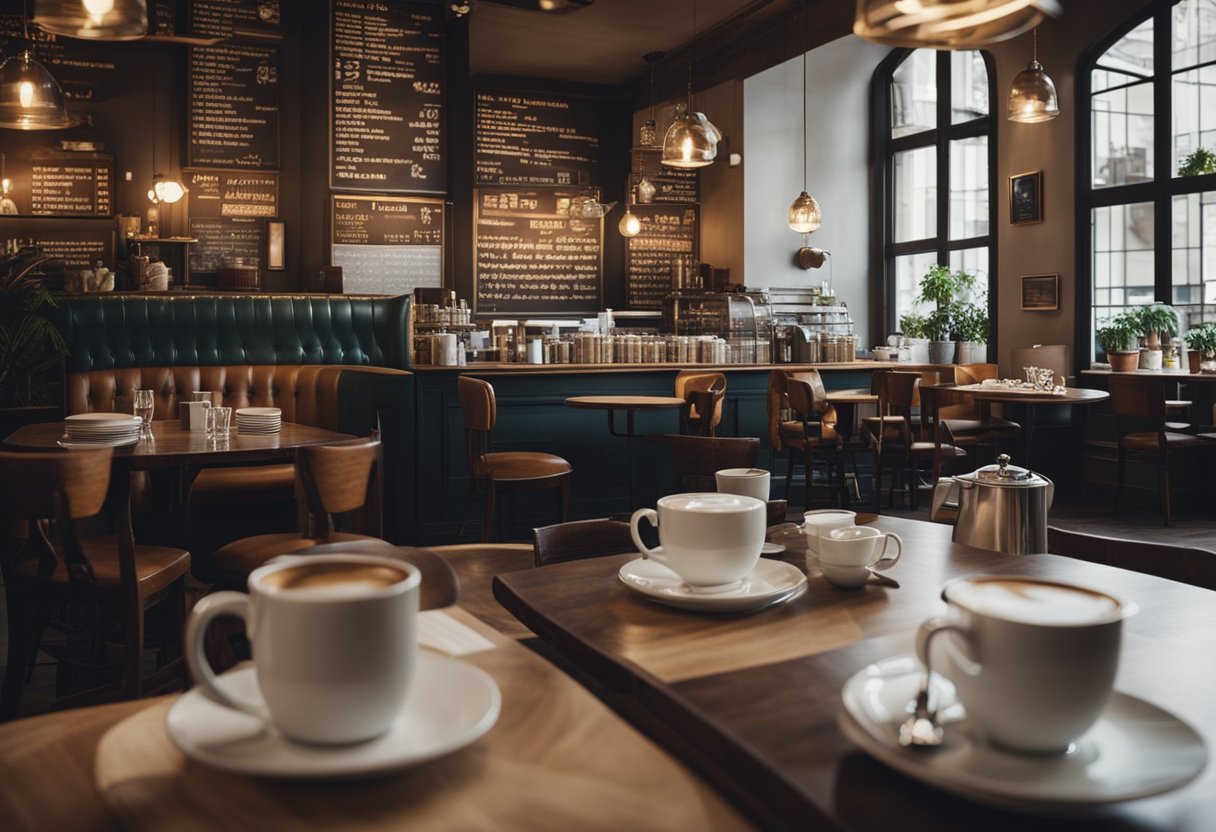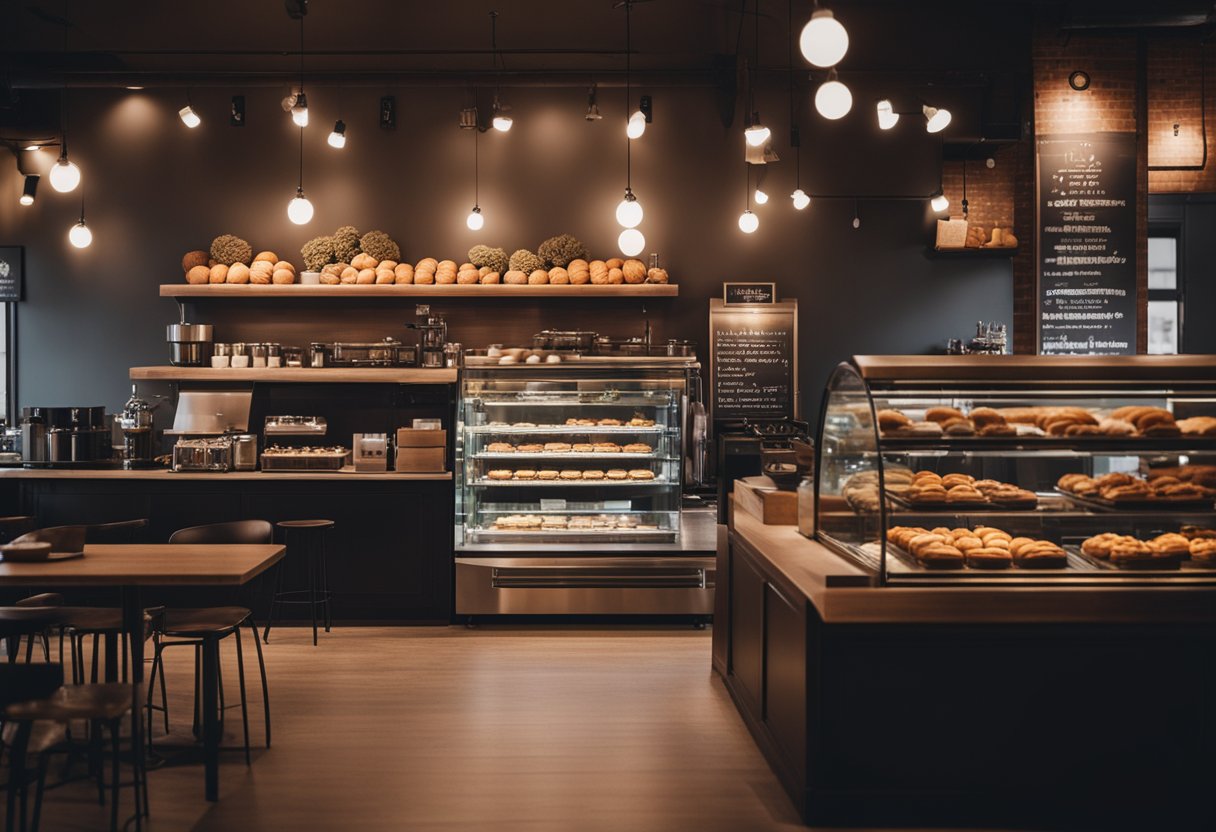1-800-982-4730
1-800-982-4730
Coffee shops and coffeehouses are both places where people can go to enjoy a cup of coffee, but are they really the same thing? There is a subtle distinction between the two that may not be immediately apparent. In general, a coffeehouse is a cozy and comfortable place with soft lighting, comfortable seating, and a relaxed ambiance. It is a great place to unwind and enjoy a good book or catch up with friends. A coffee shop, on the other hand, is a place where you can go to grab a quick bite to eat or a light meal.

The connotation of a coffeehouse is more upscale and sophisticated than that of a coffee shop. Coffeehouses are often associated with intellectuals and artists, and they typically offer a wider variety of coffee drinks than you would find at a coffee shop. In contrast, coffee shops tend to be more casual and utilitarian, with a focus on convenience and efficiency. They may offer a limited selection of coffee drinks, but they are more likely to have food options like pastries, sandwiches, and salads.
Understanding the difference between coffee shops and coffeehouses can help you choose the right place to go when you're in the mood for a cup of coffee. Whether you're looking for a quiet place to read or work, or you just need a quick caffeine fix, there is a coffee-related establishment that is right for you.

Coffeehouses and coffee shops have a rich history that spans centuries and continents. The following sub-sections explore the origins and evolution of these establishments in the Middle East, Europe, and the United States.
The coffeehouse has its roots in the Middle East, where it originated in the 15th century in cities like Mecca and Cairo. These establishments were more than just places to enjoy a cup of coffee. They were centers of social activity, where men would gather to discuss politics, business, and the arts. Coffeehouses quickly became popular, spreading throughout the Middle East and into Europe.
In Europe, coffeehouses evolved to become places where people could read newspapers, play games, and socialize. In Italy, coffeehouses were known as "botteghe del caffe," or coffee shops, and they became popular in the 17th century. The French also embraced coffeehouses, calling them "cafes," and they became centers of intellectual discussion during the Enlightenment.
In the United States, coffeehouses began to emerge in the 1960s with the second wave of coffee. These establishments were often associated with counterculture and were places where people could gather to discuss politics and social issues. In the 1990s, coffee shops like Starbucks began to dominate the market, offering a more upscale experience with gourmet coffee and cozy seating areas.
Overall, coffeehouses and coffee shops have played an important role in the social and cultural history of many countries. From their origins in the Middle East to their evolution in Europe and adaptation in the United States, these establishments have provided a space for people to come together and connect over a cup of coffee.

When it comes to coffee shops and coffeehouses, the atmosphere and features offered can be a significant factor in determining which establishment to visit. This section will delve into the various features and atmosphere of both coffee shops and coffeehouses.
The interior design and seating arrangements of a coffee shop or coffeehouse can significantly impact the atmosphere and overall experience. Coffee shops typically have a more casual and straightforward design, with a counter where customers can order their beverages. Seating options may include comfortable chairs, booths, or mixed seating arrangements.
On the other hand, coffeehouses often prioritize creating a cozy and welcoming ambiance with comfortable seating options such as sofas, armchairs, and tables. They may also have a more extensive range of furniture and decor, such as artwork and plants, to create a more inviting atmosphere.
The menu and offerings of a coffee shop or coffeehouse can vary significantly. Coffee shops typically offer a simple menu that focuses on coffee and related beverages. They may also have a limited selection of pastries and other snacks.
Coffeehouses, on the other hand, often offer a more extensive menu that includes a variety of food options, such as sandwiches, salads, and baked goods. They may also offer a more extensive selection of beverages, including tea, wine, and craft beer.
Community and entertainment can be another significant factor in the atmosphere of a coffee shop or coffeehouse. Coffee shops typically offer a more straightforward and casual environment, where customers can come in and grab a quick cup of coffee on the go. They may also have limited seating options, making it less conducive to socializing or working.
Coffeehouses, on the other hand, often prioritize creating a community-oriented environment, where customers can come and relax, socialize, or work. They may offer comfortable seating options, table service, and a more extensive range of entertainment options, such as live music, poetry readings, or open mic nights.
In summary, coffee shops and coffeehouses offer different features and atmospheres. Coffee shops tend to focus on a simple menu and quick service, while coffeehouses prioritize creating a cozy and welcoming ambiance with a more extensive menu and entertainment options. The seating arrangements and interior design can also vary significantly between the two establishments.
When it comes to the coffee served at a coffeehouse versus a coffee shop, there are a few key differences to note. In general, coffeehouses tend to focus more on specialty coffee drinks and brewing methods, while coffee shops tend to offer a wider variety of coffee options.
Coffeehouses often pride themselves on their unique and specialized brewing methods. They may use equipment such as a French press, pour-over, or siphon to create a high-quality cup of coffee. These brewing methods can result in a more nuanced and complex flavor profile than traditional drip coffee.
On the other hand, coffee shops typically offer a wider variety of brewing methods, including drip coffee, cold brew, and espresso. While these methods may not be as specialized as those used in a coffeehouse, they are still capable of producing a delicious and satisfying cup of coffee.
When it comes to coffee selection and quality, both coffeehouses and coffee shops can offer high-quality coffee. However, coffeehouses tend to focus more on specialty coffee beans and roasts, often sourcing their beans from small, independent farms.
Coffee shops, on the other hand, may offer a wider variety of coffee beans and roasts, including both specialty and more mainstream options. While the quality of the coffee can vary depending on the shop, many coffee shops take pride in offering a consistently good cup of coffee.
Overall, the coffee served at a coffeehouse versus a coffee shop can vary in terms of brewing methods, selection, and quality. However, both types of establishments can offer a delicious and satisfying cup of coffee, and the choice between the two may come down to personal preference.
Coffeehouses and coffee shops have played a significant role in shaping culture and society. These establishments have been a hub of intellectual and artistic exchange, socializing, and community building. In this section, we will explore the cultural impact and social role of coffeehouses and coffee shops.
Coffeehouses and coffee shops have been a source of inspiration for artists and musicians. These establishments have provided a platform for open mic nights and live music performances, allowing artists to showcase their talents and connect with their audience. Many famous artists and musicians have performed in coffeehouses and coffee shops, contributing to the rich cultural heritage of these establishments.
Coffeehouses and coffee shops have played a crucial role in community building. These establishments have been a space for people to come together, socialize, and exchange ideas. They have provided a platform for community meetings, allowing people to discuss and address important issues. Coffeehouses and coffee shops have also been a space for people to connect with like-minded individuals, fostering a sense of belonging and community.
In conclusion, coffeehouses and coffee shops have had a significant cultural impact and social role. They have been a space for artistic and intellectual exchange, socializing, and community building. These establishments have contributed to the rich cultural heritage of society and will continue to play a crucial role in shaping culture and society.